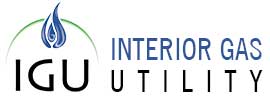by Matt Buxton
JUNEAU — The new goal for Fairbanks’ first liquefied natural gas delivery through the Interior Energy Project is late 2017, with residential customers expected to start converting mostly in 2018.
Earlier versions of the project had an estimated delivery date in 2015, but that slipped as costs came in higher than initial estimates and the project missed deadlines.
The Interior Energy Project officials discussed the updated timeline as part of a progress report to the House Special Committee on Energy on Tuesday. The state recently announced it had selected Washington-based Avista Corp. subsidiary Salix to partner on a Cook Inlet-area gas liquefaction plant to source the gas.
Interior Energy Project team lead Gene Therriault said the agreement with Salix should be finalized by June, allowing preliminary work to start at the Cook Inlet site this summer and fall.
Parts that require a long lead time to procure would be ready for construction next summer, he said.
The committee was less skeptical about the project than the Legislature was last year, when a North Slope-focused plan fell apart and the state essentially hit the restart button on the project. That turned into a feud between some legislators and Gov. Bill Walker that resulted in legislation that freed up the focus of the project and added regular reporting to the Legislature.
Energy Committee members had questions about the cost of the project and its competitiveness with oil.
Therriault said it’s a matter that project members are watching closely. The target price for 1,000 cubic feet of natural gas is $15, which is roughly equivalent to heating oil at $2 per gallon.
“Anybody involved in this project knows if costs run away, there’s not going to be a project,” he said. “If you’re wishing to sell gas to this project and price goes away, you’re not going to sell any gas. I think everybody really is motivated because there’s this target.”
Documents evaluating Salix as a partner put the cost of gas to customers at about $15.75, but Therriault said there’s work being done to lower the cost through the system and said there’s particularly good potential for the cost of raw gas to drop from the estimate of $6 per thousand cubic feet.
The Alaska Railroad, which won federal approval to ship liquefied natural gas by rail, is also continuing to explore ways to economically ship gas, he added.
Another question from the committee focused on conversions for homeowners. Therriault said many people will likely wait until summer 2017 to switch their heating source even though first gas is expected to arrive earlier that year.
In the meantime, he added there’s renewed efforts being put toward helping make conversions easier.
“We are looking at mechanisms that could help the customer with that conversion, like being able to access loan funds that have a lower interest rate and spread the payments out over time so that a consumer can afford to do so and hopefully see a drop in their energy cost,” he said.
Contact staff writer Matt Buxton at 459-7544. Follow him on Twitter:@FDNMpolitics.
